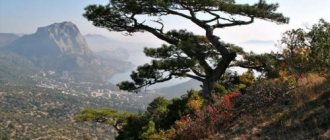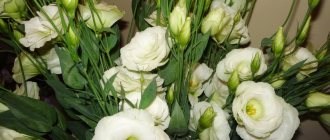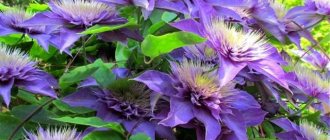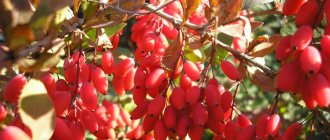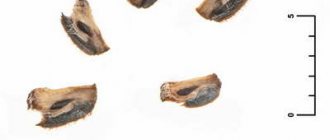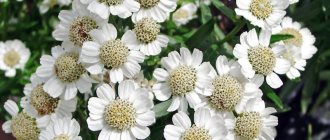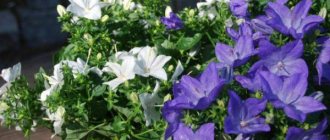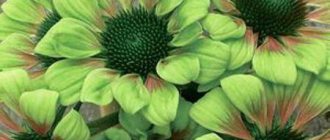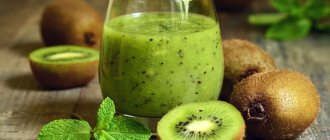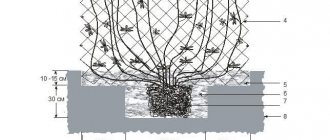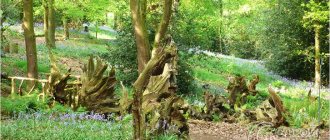Kirkazon is a herbaceous, woody vine that is used for landscaping vertical structures in landscape design. In the descriptions there are other names: camphor, febrile, parturient, aristolochia.
The genus of the Kirkozonaceae family is ancient; these plants are distributed across all continents. The elegant, dense leaf cover and original flowering outshine even ornamental shrubs.
The unusual color and shape of the flowers seem exotic. Cultivation is also specific when compared with other vines.
Features of Kirkazon
The Kirkazon plant is part of the Kirkazonaceae family, and this genus includes approximately 180 species. In nature, such a plant can be found in the tropical and temperate zones of Asia, America and Africa. In Russia, only 5 species of kirkazona grow naturally, which are found in the European part, in the North Caucasus and the Far East.
This deciduous perennial is a large creeping vine that has smooth, woody stems. They can be curly or erect. The average length of shoots of such a plant is about 10 meters. However, there are species whose stems are much longer, for example: in the clematis, they can reach a length of about 15 meters, and in the Manchurian - about 20 meters. A wide crown and lush foliage are the characteristic features of this plant. In addition, it is distinguished by very rapid growth; in the warm season, within just 24 hours, its stems increase in length by 12–15 centimeters.
The wide, large, bright green leaf blades have a smooth edge and a heart-shaped or rounded shape. This plant also differs from other vines in the arrangement of its leaf blades. They are placed one above the other, resulting in a wide crown that looks similar to a tiled roof.
As mentioned above, the flowers of Kirkazon are not quite ordinary. They grow from leaf axils and are completely devoid of a corolla. The flower consists only of a perianth, which looks like a jug, a curved tube, a horseshoe or a gramophone. Most often, the upper part of the perianth is somewhat narrower than the lower part, and there is a bend on it that looks like a tongue.
The bushes bloom for the first time only after they are 5–8 years old. Kirkazon blooms from 5 to 25 days, and most often its flowers are hidden from view by lush greenery. In place of the flowers, fruits are formed, which are a box in the shape of a ball or cylinder in which the seeds are located.
Kirkazon grows best in light shade or shade, and the area must have reliable protection from drafts. In nature on the territory of the Russian Federation, this liana-like plant is most often found in the southern regions. It is distinguished by its unpretentiousness and ability to grow even on hard soil.
Dragon skin or Kirkazon (Aristolochia)
Aristolochia in landscape design
Aristolochia in garden design photo
This showy vine with a shingle-like vein pattern on its leaves grows quickly. It is used for vertical gardening of large areas below and at height: pergolas, gazebos, trellises, building facades, balconies, terraces, columns, tree trunks. You can create a green room, a tunnel, a roof, or a screen in the garden. Kirkazon looks strict in the landscape.
Reproduction methods
Kirkazon can be propagated by cuttings, seeds and root layering.
Propagation by cuttings
Preparation of cuttings is carried out in autumn and spring. To do this, cut annual stems with several buds; the length of the segments should be about 20 centimeters. The soil should be mixed with sand and humus. The segments are planted in the substrate at an angle, with several buds rising above the surface of the soil mixture. Don't forget to feed the cuttings and water them well. After this, the cuttings are covered with glass jars, cut plastic bottles or another transparent cap.
Reproduction by layering
It is much easier to propagate Kirkazon by layering than by cuttings. Select a strong, healthy stem and lay it on the surface of the soil. Fix it in this position, and after 1 season it will take root. The resulting cuttings can only be separated from the mother bush and planted in a permanent place.
Planting in open ground
The time for planting Kirkazon in open ground depends on how resistant the species is to frost. In this case, vines are planted in autumn or spring. Winter-hardy species are planted in the autumn, using two-year or three-year-old seedlings. Spring is suitable for planting species that are less resistant to frost. Since the root system of the bushes is superficial and wide, when planting in open ground, a distance of at least 100 cm is maintained between them.
The width and depth of the planting hole should be about 50 cm. At its bottom, be sure to make a good drainage layer with a thickness of 10 to 20 centimeters; for this you can use crushed stone, brick fragments, expanded clay or gravel. The drainage from above is covered with a layer of sand 5 to 10 cm thick, and organic matter is also added. The soil should be mixed with sand, humus and clay. Immediately install the support, the length of which should not exceed eight meters. The vine will climb along it counterclockwise. Before planting a seedling, its root system is shortened by 1/3. When planting, make sure that the root collar of the plant is flush with the soil surface.
If you need to transplant an adult bush to another place, then this procedure should be carried out at the beginning of the spring, before the foliage begins to actively grow.
Kirkazon care
In order for Kirkazon to grow and develop normally, it requires proper care:
- Water the vine systematically, avoiding allowing the soil to dry out. During dry periods, do not forget to moisten the leaves from time to time with a spray bottle.
- It is enough to carry out 2 feedings during the season, using a solution of mullein in a ratio of 1:10.
- You need to loosen the soil very carefully and not very deeply. The fact is that the root system of such a plant is superficial.
- Weeds should be removed from the site as needed.
- The surface of the soil around the stem and the entire root system should be mulched with half-rotted flying leaves. Mulch helps protect the soil from drying out, and during overheating it saturates the soil with nutrients.
- In order to preserve the decorative appearance of the bushes, do not forget to promptly cut out dried foliage and stems.
Diseases and pests
Kirkazon is characterized by fairly high resistance to diseases and pests. But if a plant infected with spider mites or aphids grows next to the vine, the pests can move onto it.
If spider mites appear on the foliage, then you should spray it with a decoction of creeping mustard. Add 100 to 120 grams of finely chopped dried herbs to one liter of water. Bring the mixture to a boil and simmer over low heat for 20 to 30 minutes. Remove the broth from the stove, wrap it up and leave to infuse for 15–25 minutes. Strain the broth and dilute with clean water in a 1:1 ratio. Treat all leaves with the solution.
Wintering
Only adult kirkazon, which is 2 or 3 years old, is highly resistant to frost. Before the first autumn frosts, the shoots of the young plant should be placed on the surface of the site and covered with fallen leaves, and the layer thickness should be from 8 to 10 cm. During the winter, the tops of the stems may freeze, but with the onset of spring the plant quickly recovers.
Graceful Kirkazon will die in the open ground in winter. In this regard, in the fall it should be planted in a container, which is placed in a heated, well-lit room. In order not to dig up the bush every year, it is simply not planted in the ground, but taken out into the garden in a container.
Growing and care
Each plant variety has its own characteristics, but the requirements for location and care are common, with the exception of K. graceful, which grows only in the sun.
Site selection, soil
Most varieties of the crop grow in nature in partial shade from tall trees, so they thrive in areas with openwork shade, and large-leaved kirkazona is comfortable even in the shade.
K. graceful stops growing in the shade - for active growth and development it needs a well-lit area.
A place where there is constant air movement and drafts is not suitable for the vine, since the thin sheet breaks in a strong wind. You should choose a sunny area where there are no drafts, the soil is loose, moist, but without stagnant moisture.
Seedlings aged 2-3 years or one-year-old cuttings in spring or autumn are planted in pre-prepared pits measuring 0.5 x 0.6 x 0.6 m with a drainage layer of expanded clay, crushed stone, brick chips, maintaining a distance between them of 80 to 100 cm. Since The vines grow quickly, forming a wide crown; at the same time, a high (up to 8 m) support should be installed. The soil mixture can be prepared from excavated soil, sand, add a little clay, peat and humus.
Planting material must be inspected before planting, long roots should be shortened by half their length, and weak and thin ones by a third. After filling the hole, the root collar should remain at soil level. To prevent water from draining when watering, build a low side around the trunk and pour a layer of mulch (5-7 cm) from dry leaves, grass, and chopped branches. It is not recommended to use pine needles in mulch, since the crop does not like acidic soils.
How to care
One of the features of Kirkazon is that it loves moist soil, but does not tolerate stagnant moisture. This should be taken into account when watering, taking into account weather conditions - in dry, hot weather, water twice a week, in normal weather - once a week. If there is not enough moisture, the leaves immediately lose their elasticity, become sluggish and pale. This is especially noticeable in the heat, when moisture intensively evaporates from the wide leaf plate, so it is recommended to spray the bush in the morning and evening.
If after watering you mulch the soil with organic matter (humus, compost), it will not only retain moisture and protect against weeds, but will also become a source of nutrients.
In this case, fertilizers are not applied. If desired, you can carry out two or three feedings with infusions of manure, humus or herbs.
Loosening, along with weeding, is a mandatory procedure to maintain the soil loose and moisture-permeable. Deep loosening is contraindicated, since the roots are located almost at the surface.
Pruning, wintering
Pruning of fast-growing vines is carried out several times a year. To make the plantings look decorative and neat, you should remove damaged, dry stems that are growing in the wrong direction. Pruning also limits their growth.
Aristolochia (kirkazon) is a frost-resistant crop, and an adult plant can easily tolerate frosts from -15° to -17°C, and a young one needs to be covered for the first two to three years, removed from its support and spread on the ground. Dry leaves, grass, and sawdust are suitable as shelter. Cover the top of the leaves with a covering material to prevent them from being blown away by the wind, pressing the edges with something heavy.
There is no need to remove mature vines from their support; to protect the root system with the onset of frost, you just need to sprinkle the ground with mulch made from humus, compost, and leaves. Frozen shoots are pruned in the spring, and the plant quickly recovers.
In temperate climates, it is convenient to grow K. graceful in tubs and bring it into a cool room for the winter.
Types of Kirkazon with photos
Most gardeners compare kirkazon with weeds. It grows quickly, can easily take root on any soil and quickly climb up a support. The flowers of this plant look extremely unusual due to their bizarre shape. For example, the flowers of Salvadoran kirkazona look like a skull with large empty eye sockets. This species is also often called the devil's flower. And Manchurian kirkazon grows in Russia in mid-latitudes and is highly resistant to frost.
Manchurian Kirkazon (Aristolochia manshuriensis)
The trunk of this vine is woody. In an adult plant, the stems can reach about 15 meters in length and from 6 to 8 centimeters in diameter. The shoots are covered with soft cork bark. During the first three years of life, the shoots of this species do not grow very quickly. The plant needs support.
Large, heart-shaped, rounded leaf plates reach from 25 to 30 centimeters in length, with a slight point at the top. The foliage has a specific camphor aroma. In a young leaf blade, the lower part is covered with characteristic pubescence, and the upper part is much less pubescent. As the foliage matures, both surfaces become covered with short and sparse pubescence.
Brown small flowers are shaped like small jugs. Peak flowering occurs in the last days of spring. When the plant fades, fruits are formed on it, the shape of which is similar to a cucumber. The dark-colored seed pods have an elongated shape (width about 30 mm and length up to 100 mm), dark bare concave-convex seeds ripen inside them, reaching about 0.7 cm in diameter. There are from 50 to 130 seeds in one fruit , which ripen in mid-October.
Kirkazon Manchurian grows best in moist, fertile soil, while the site should be in slight shade and have reliable protection from drafts. In just 1 year of growth, the stems can reach a length of about 300 cm. For propagation, layering or freshly harvested seeds are used (sowing is carried out immediately after they are fully ripened). It is recommended to cover such a plant for the winter, especially if it is young.
Felt or fluffy Kirkazon (Aristolochia tomentosa)
Externally, this species looks more like a strongly branching shrub. It grows best in areas located in the shade and protected from gusts of wind. The height of the bush can reach about ten meters.
The petioles of the leaf blades are long and can reach from 50 to 70 mm. The ovate-rounded wide foliage has a diameter of 12 to 15 cm, its edge is smooth and rounded. The underside of the leaves, shoots and petioles are covered with pubescence. At the same time, there is a sparse pile on the front side of the leaves.
Single greenish fuzzy flowers grow at the base of the leaf blade and look more like a curved tube, which reaches about 35 mm in diameter. The flower is located on a long (about 50 mm) peduncle and has a three-lobed wrinkled limb of yellow color.
Moist soil rich in nutrients is suitable for this species. Unlike other species, this plant produces a large number of young root shoots. The fruit is an elongated hexagonal box, which can reach from 60 to 80 mm in length.
Graceful Kirkazon (Aristolochia elegans)
This evergreen vine is native to the tropics of South America. The heart-shaped leaf plates are quite large in size. During flowering, the bush is decorated with flowers that look like small gramophone pipes. Their width varies from 8 to 10 centimeters, and they can reach about 12 centimeters in length. The flowers are white and decorated with dark brown and dark red spots. The bush blooms in July and fades in September. Pollination occurs with the help of flies and other insects. Closing the entrance to a flower occurs after it is pollinated.
This species is thermophilic, and it is recommended to choose a well-lit area for planting it. The plant may suffer from severe frosts and drafts. In autumn, the bush is removed from the soil, planted in a container and brought into a warm room. In the spring it is returned to its place.
Kirkazon graceful should be regularly watered abundantly, and also systematically fed with organic matter. For propagation, cuttings are used, which quickly produce roots. Since the seeds do not have time to ripen well, they have low germination. And the emerging seedlings are characterized by extremely slow growth.
Common Kirkazon, or clematis (Aristolochia clematitis)
This herbaceous vine is a perennial. In an adult bush, shoots can reach about 15 meters in length. In this case, the length of young stems can reach up to one and a half meters. The bare, upright, slightly curly stem is colored greenish. The rhizome of this species is creeping. To grow it, it is recommended to choose a shaded area.
Round-heart-shaped alternately arranged matte leaf plates reach about 10 centimeters in length. They are painted green and have a rough edge. They emit a subtle, unpleasant aroma, which is necessary to attract flies for pollination.
Flowering occurs from May to June and lasts about 30 days. At this time, the bush is decorated with yellow flowers, the shape of which is similar to a jug. One or several flowers grow from the base of the leaf blade. Only bushes older than 5 years bloom.
This plant is distinguished by its frost and drought resistance. At the same time, excessively abundant watering can harm it. For propagation, sections of rhizomes are used, since seed setting occurs extremely rarely and at the same time they do not have enough time to ripen well.
Large-leaved or tubular kirkazon (Aristolochia macrophylla)
The length of the stems of such a shrub vine can vary from 10 to 12 meters. The heart-shaped, rounded large leaf plates reach from 25 to 30 centimeters in diameter. They are attached to the shoots using petioles, reaching a length of 50 to 70 mm.
The bush blooms for 5–25 days. At this time, it is decorated with yellowish-green single flowers, which have the shape of a bending tube. They have a three-lobed brown limb, the length of which is no more than 30 mm.
To pollinate the flowers of such a plant, flies are needed. A pollinated flower closes its entrance. The bush begins to bloom only after it is at least 5 years old. The faded bush produces fruits on a long stem, shaped like a hexagonal cylinder. Seeds ripen inside them.
In order for the bushes to grow better, they are planted in nutritious soil, and a shaded place is chosen that has good protection from strong gusts of wind and drafts. The fact is that the wind can damage the foliage. Water them regularly, preventing the soil from drying out. The species can be propagated by layering and seed. In this case, the seed material quickly loses its viability.
Plant species
The article will examine the most common species in our country:
- Common - leaves are large and rough to the touch. It often reaches 15 meters in length. Flowers in yellow shades. After flowering, small fruits similar to watermelons are formed.
- Archistolochia (large-leaved) - flowers with a green tint, the vine trunk is thick and smooth. Flowering begins in early summer. With the arrival of spring, this type of plant sheds all its leaves.
- Manchurian - green leaves, cream and ivory flowers. The plant emits a camphor-like smell. After flowering, the leaves turn yellow and fall off.
- Felt - grows up to 10 meters in height. The flowers are yellow in color and slightly wrinkled. There is a huge amount of villi on the shoots.
- Graceful - flowers are larger than other species. Thick, green shoots. Flowering begins in mid-summer and lasts until early autumn.
Medicinal properties
Kirkazon clematis contains toxic substances. Because of this, drugs made on its basis can only be used as prescribed by the treating doctor and under his supervision. It is the doctor who must prescribe the dosage. For many centuries, the medicinal properties of other types of Kirkazone have been studied. Descriptions and methods of using such a plant can be found in various works and manuscripts.
This vine has the following beneficial properties: antimicrobial, wound healing, antiviral and antifungal. It is used to strengthen the immune system and normalize metabolism.
Kirkazon clematis is used in official medicine to treat a variety of diseases, namely:
- respiratory diseases - cough, flu, pulmonary tuberculosis, shortness of breath, sore throat and ARVI;
- disorders in the female reproductive system - cystitis, problems with the menstrual cycle, erosion, infertility and fibroids;
- skin diseases - scabies, psoriasis, dermatosis, swelling, rashes, abrasions, bedsores, itching, festering wounds, varicose ulcers, eczema and diaper rash;
- diseases of the vascular and cardiac system - varicose veins and hypertension;
- problems in the activity of the nervous system - migraine, nervous exhaustion and fatigue, headache, insomnia, neurasthenia and stuttering.
In alternative medicine, tinctures, decoctions and ointments are prepared from this plant for external use.
People have known for a long time that Kirkazon has healing properties. In Eastern and Chinese traditional medicine, this plant is used for a variety of diseases. And African peoples use it as an antidote for snake bites.
Contraindications
The plant contains poison, and therefore products based on it should not be taken in excess of the norm. It should not be used by pregnant or breastfeeding women or children. It is also contraindicated for uterine bleeding, gastritis, individual intolerance, and also for kidney and liver diseases.
When applying compresses or wiping the skin, a burn may form (if the skin is highly sensitive) or a burning sensation may appear (in the case of a fungal infection of the skin). Most often used only externally.
Root decoction
A decoction is obtained from the roots of kirkazon, which is used for compresses and added to the bath. It helps with the following ailments: diseases of the joints and skin, as well as metabolic disorders.
Pour half a liter of just boiled water into a thermos and add 2 or 3 tablespoons of finely chopped dried roots. Close the thermos with a lid and leave for 2-3 hours, then pour its contents into the pan and boil for 5 to 7 minutes. Remove it from the stove and cover with a towel for half an hour. The cooled broth is filtered. It is used for wiping problem areas (for 15–25 minutes), for preparing foot baths or for making compresses (put on overnight).
Tincture
A tincture is prepared from the herb of such a plant, which is used as a lotion for severe pain or inflammation of the skin. Half a glass (100 ml) of vodka and ½ tsp. finely chopped dried kirkazona herb is mixed and poured into a container, which is tightly sealed and placed in a cool, dark place for 7 days. Remember to shake the contents of the container once every couple of days. Drink three times a day, using 15 to 20 drops.
Kirkazon: medicinal properties and contraindications for psoriasis and other diseases
Procurement of raw materials
Both the roots and the grass of kirkazona have healing properties. The foliage and shoots are trimmed during the peak of flowering, and the roots are removed from the ground in the autumn. The above-ground part of the bush is laid out on a horizontal plane in a well-ventilated room; it must be turned over systematically. Avoid direct sunlight. Remains of soil are removed from the roots with cool water and dried in the oven at 60 degrees.
Finished raw materials are stored in tightly closed containers for about 2 years.
Pharmacological properties of Kirkazon clematis
The aristoloquinic acids contained in kirkazona clematis increase heart contractions, cleanse the body of excess fluid, and promote vasodilation. Products based on this vine are very effective against viral and fungal diseases.
It also contains capillary poison, which is prone to accumulation in tissue cells. It is used very carefully, because the carcinogenic effect may appear after a long period of time.
The chemical composition of different types of kirkazone may differ significantly, but they also have common components - aristolochic acids and their compounds (glycosides, lactones and esters). The greatest danger is posed by clematis clematis, because it contains the highest concentration of aristolochic acids I and II.
The plant also contains essential oil, phenolic acids, bitter and tannins.
Problems and diseases
Kirkazon rarely gets sick. And pests rarely appear on it. Problems that arise may be related to disruptions in care. Most often, roots rot due to stagnation of liquid in the soil. It is necessary to adjust watering and possibly transplant the plant to another place.
Caterpillars can settle on the leaves. They eat stems and leaves. This makes the plant unsightly and begins to die. The caterpillars are removed manually and treated with a special product. It is best to destroy any pests with the help of medications. You can buy them in specialized flower shops.
